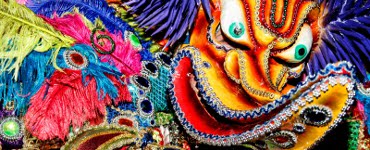The Dominican culture is fundamentally based on the convergence of two mother cultures: Spanish and African. It has little or no indigenous culture, since in less than 50 years, the Indians inhabiting the island of Santo Domingo in 1492, when Mr Christopher Columbus set foot on these lands, were wiped out by forced labor.
The Dominican culture exists. And it did not originate from nothing. It exists by force of a history of 500 years established in the pouring sweat of the slaves, the arrival of the European to these lands and an intelligent mixture of a range of customs and cultures that have coexisted for five centuries.
The lively and rhythmical Dominican merengue has managed to transcend the national borders and can be heard in dance halls across the world. Among its top exponents are figures such as Joseito Mateo and Luis Alberti, or the contemporary artists Johnny Ventura, Juan Luis Guerra, Wilfrido Vargas, Fernando Villalona and Sergio Vargas, who have exported our music with great success to foreign shores.
Dominican Carnival is perhaps one of the most powerful exhibitions of Dominican culture, held every year the national holidays of February 27 and August 16.
Some beliefs
Bacá:
When a person begins to earn money quickly and with no obvious explanation, people say that it is because they have a “bacá”.
They get the bacá through a pact with the devil, who will give the person wealth and land, and as punishment for this, they will receive pain, illness, misfortune and will gradually lose their loved ones, family and relatives, before they themselves are taken.
Agua de mayo:
The first agua de mayo (spring shower) is considered to be magical. When it falls, the people collect the rainwater with their hands and wash their face with it as an act of purification, in the hope that it will cure their wrinkles and rejuvenate them.
The water from the spring shower is also collected in bottles, which serves as a protector and cure for health problems.
Amarradores de agua (water controllers):
When it is overcast, or "negrecito", as the locals say, there are specialists in the communities with magical powers frighten away the water in order not to damage the crops or ruin the blossoming fruit trees.
These people are also capable of controlling the rain and whether or not it falls in certain places where it is not convenient for crop-growing; according to the local belief, the locals can even walk in the middle of a rain shower and not get wet, as the water falls behind them.
The Biembienes
Deep in the hills and mountains, some harmless, silent and naked beings live; they come out at night in search of food, and are known are "Biembienes".
The Nimitas
Nimitas are glow worms which are very common in the countryside and which emit a light at night when they fly silently. People believe that the nimitas are the souls of the dead, which come out to watch over their loved ones.
Los Negros and the Máscaras del diablo:
In some communities of War, on Easter Sunday, you can see some wild carnival masks, which receive the name "los negros" (the blacks). Their job is mainly education, as they scare the bad children in the communities. The same happens in some areas of Elías Piña, such as Matayaya, for example, with the "máscaras del diablo" (masks of the devil).
Thunderstone:
On finding it with a pre-Columbian axe, many people believe that they have before them a magical stone which will protect them against thunder and lightning, because thunder and lightning never strikes a home containing one of these stones, hence the name "thunderstone" (piedra de rayo). It is also said that they are made in the spot where lightning strikes.

